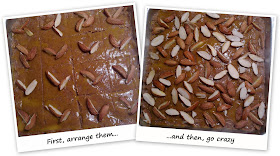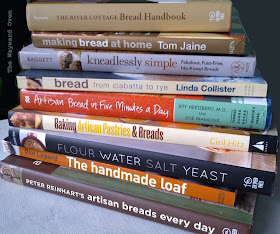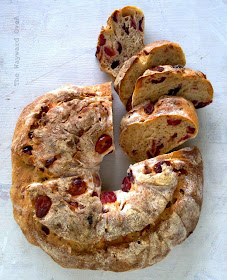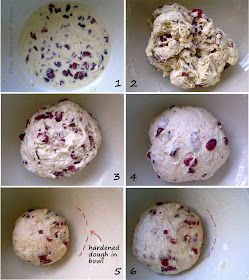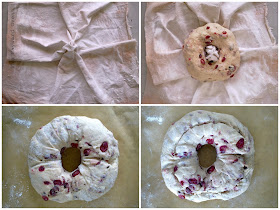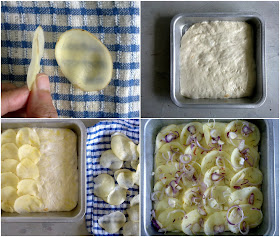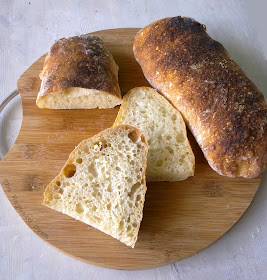 |
| BATTERED FOOTWEAR: SEMOLINA CIABATTA AU LIQUID LEVAIN |
 I am happy to report that the two loaves I have made so far have turned out well. Now, while I am not yet putting to rest my concerns, at least I know I am not completely incapable of handling such high-hydration doughs.
I am happy to report that the two loaves I have made so far have turned out well. Now, while I am not yet putting to rest my concerns, at least I know I am not completely incapable of handling such high-hydration doughs.
The second dough had semolina flour along with a combination of all-purpose and strong bread flours which is said to replicate French T65 flour (high-protein baguette flour). The recipe for the dough was loosely based on applepiepatispate's take on Eric Kayser's Ciabatta au Liquid Levain.
As expected, the dough was wet and slack. I used the slap-and-fold method to knead until the gluten was developed and the dough became smooth, and then did the stretch-and-fold a few times over an hour. Overnight in the fridge, the dough rose but not by much. As I didn't have time to make the loaves, I had to leave the dough in the fridge for another day, and at the end of it, the dough had almost come up to the top of the container.
 |
| The dough tripled in bulk after two days in the fridge |
The loaves had a good tang and the semolina flour is slightly sweet, so I have no problem with the taste of the loaf. The crumb is moist and springy, although I would have liked bigger holes. And I would like to say that the dark crust is totally intentional, but it is, in fact, burnt. But like those bits at the end of a roast, the flavour is really good. Ciabatta are supposed to look like battered slippers, aren't they?
Overnight Semolina Ciabatta au Liquid Levain
Makes 3 loaves
Liquid Levain
25g mother starter
130g water
100g bread flour
Combine the ingredients in a jug, cover and leave at room temperature until bubbly and tripled in size, 8-12 hours.
Final dough
150g liquid levain
350g water
233g all-purpose flour
117g bread flour
150g semolina flour
11g salt
⅛ tsp instant yeast
Mix levain and water. Stir in the three kinds of flour. Autolyse 20-30 minutes.
Sprinkle salt around the edge of the dough and the yeast in the centre. Incorporate until combined.
Knead until smooth, using whatever method is comfortable. The dough will still be soft but will start to feel more elastic.
Ferment at room temperature for 60 minutes, with three stretch-and-folds, ending with a ball. The ball should expand slightly each time.
Place dough in a large lidded container and refrigerate overnight or up to four days.
Remove container from refrigerator an hour before shaping.
Dust a work surface heavily with flour. Cut three wide strips of parchment paper and place them on a tea towel with space between them.
Transfer dough to the floured surface, degassing as little as possible. Dust the top with flour and divide into three fat logs. Place a log on each of the strips and bring up the tea towel between them to keep them apart. Cover with another tea towel and proof for 1 hour.
Prepare the oven for hearth baking with a steaming pan in the bottom. Preheat to 230°C.
Transfer loaves (still on parchment) to the oven and pour hot water into the steaming pan. Bake for 12 minutes, then turn the loaves around. Turn down oven to 190°C and bake a further 15-20 minutes until tops are dark and crusty.
Cool for 45 minutes before slicing.



